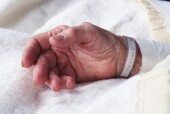Hospital-Acquired Conditions Initiative cut payment in 0.003 percent of discharges
TUESDAY, July 28, 2015 (HealthDay News) — The 2008 Hospital-Acquired Conditions Initiative (HACI) payment changes for pressure ulcers have had a minimal effect, according to a study published in the July issue of the Journal of the American Geriatrics Society.
Jennifer Meddings, M.D., from the University of Michigan Medical Center in Ann Arbor, and colleagues examined the financial effect of the HACI pressure ulcer payment changes on Medicare, other payers, and hospitals. All-payer statewide administrative data were assessed for more than 2.4 million annual adult discharges in 2007 and 2009. The authors examined pressure ulcer rates and hospital payment charges for 311 adults discharged from acute-care hospitals.
The researchers found that hospital-acquired pressure ulcer rates were low in 2007 and 2009 (0.28 and 0.27 percent, respectively); present-on-admission pressure ulcer rates increased from 2.3 percent in 2007 to 3.0 percent in 2009. Hospital-acquired Stage III and IV ulcers occurred in 603 discharges (0.02 percent); 2.42 percent of other discharges contained other pressure ulcer diagnoses. In 0.003 percent of discharges, payment was reduced with payment removal for hospital-acquired Stage III and IV ulcers, for a statewide payment decrease of 0.001 percent for all payers and Medicare. The HACI reduced hospital payment in 0.81 percent of cases for all other pressure ulcers, reducing statewide payment by 0.21 percent for all payers and 0.32 percent for Medicare.
“The total financial effect of the 2008 payment changes for pressure ulcers was negligible,” the authors write.
One author disclosed receiving honoraria for lectures and teaching related to catheter-associated urinary tract infection and hospital-associated pressure ulcers.
Copyright © 2015 HealthDay. All rights reserved.








